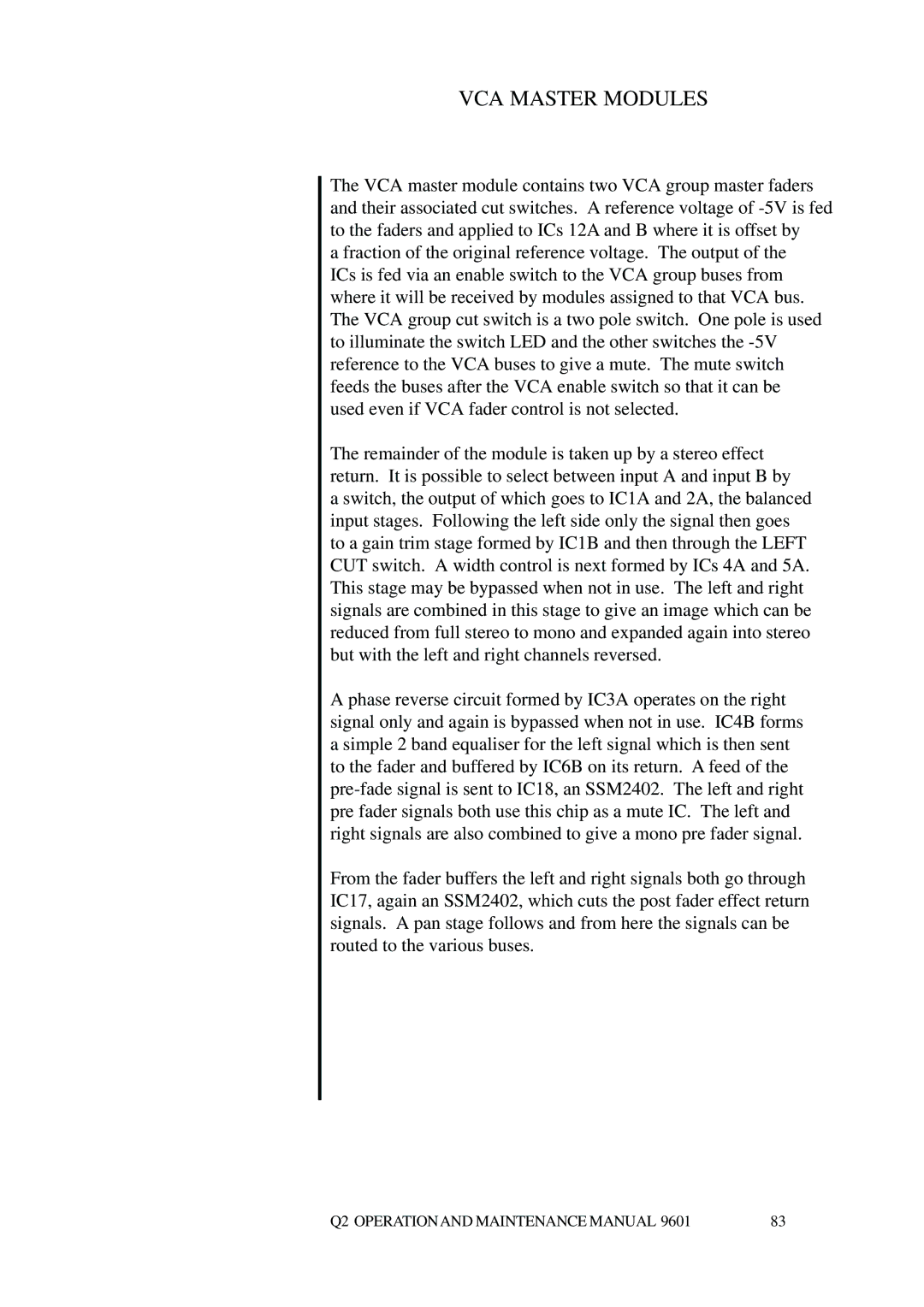VCA MASTER MODULES
The VCA master module contains two VCA group master faders and their associated cut switches. A reference voltage of
a fraction of the original reference voltage. The output of the ICs is fed via an enable switch to the VCA group buses from where it will be received by modules assigned to that VCA bus. The VCA group cut switch is a two pole switch. One pole is used to illuminate the switch LED and the other switches the
The remainder of the module is taken up by a stereo effect return. It is possible to select between input A and input B by a switch, the output of which goes to IC1A and 2A, the balanced input stages. Following the left side only the signal then goes to a gain trim stage formed by IC1B and then through the LEFT CUT switch. A width control is next formed by ICs 4A and 5A. This stage may be bypassed when not in use. The left and right signals are combined in this stage to give an image which can be reduced from full stereo to mono and expanded again into stereo but with the left and right channels reversed.
A phase reverse circuit formed by IC3A operates on the right signal only and again is bypassed when not in use. IC4B forms a simple 2 band equaliser for the left signal which is then sent to the fader and buffered by IC6B on its return. A feed of the
From the fader buffers the left and right signals both go through IC17, again an SSM2402, which cuts the post fader effect return signals. A pan stage follows and from here the signals can be routed to the various buses.
Q2 OPERATIONAND MAINTENANCE MANUAL 9601 | 83 |
